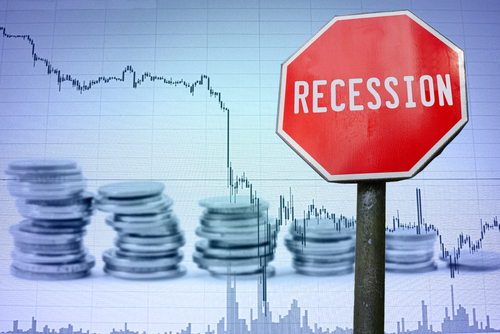
Monetary Policy & Inflation | US

Monetary Policy & Inflation | US
‘Two ways – Gradually then suddenly.’ So Ernest Hemingway describes how one of his characters went bankrupt.
Over much of the past year, we have waited to see if the Fed raising rates to slow inflation will bring on a recession. Certainly, that is what the traditional playbook calls for. A traditional recession indicator – an inverted yield curve – has been flashing yellow since June when the 2y Treasury yield traded above the 10Y yield. That flashing became more urgent in early November when the 10Y yield slipped below the three-month T-bill rate.
Yet the labour market continues to boom, consumer spending remains robust, and now there is more talk of a Fed pause and the possibility of a soft landing if inflation eases further.
That is about the closest that we have seen of people actually characterizing what that elusive recession might look like.
Every recession is different of course. But for our purposes, we loosely classify them as pre- and post-1990. Before 1990, recessions were basically business cycle recessions – the economy heated up or inflation picked up, and the Fed raised rates to cool things down.
Since 1990, however, recessions have been borne more of crises.
The next recession will be different.
Today, the prospective recession has some of the hallmarks of a business cycle recession. Unemployment is low; inflation is high; demand is outstripping supply. And the Fed has raised its policy rate from 0% to 4% in 2022, with more to come.
But there are key differences too. Much of the inflation was due to supply-chain problems emanating from Covid-related lockdowns. There was the astonishing surge in used car prices because carmakers have not been able to get enough semiconductors to resume normal production. These are one-time shocks that will dissipate over time – if a bit too slowly for the Fed’s liking.
The tight labour market is largely a result of well-known demographic forces, as baby boomers reach retirement age. Wages are rising – but this is as much a supply and demand story as a response to inflation. There is also a case to be made that what we are seeing is less wage inflation but rather a redistribution of income between labour and capital back to labour after declining from 62% to 56% between 2000 and 2015.
In short, this is not a pre-1990 business cycle. And that raises the prospect that the recession – if it comes – will be different both from both pre- and post-1990 recessions.
We offer this unlikely – but possible – grey swan scenario.
The economy continues to hum. The labour market remains tight. Inflation eases, but only gradually so the Fed keeps the pressure on. Wages rise but do not settle into a 1970s-style wage-price spiral. There continues to be confusion about why the economy is not following the traditional playbook.
Then suddenly, the economy hits a wall. The labour market stalls and unemployment jumps. Consumer spending shrinks to little more than necessities.
What brings this on? Like the post-1990 recessions, it could be some geopolitical event or financial collapse somewhere.
Another possibility is that it is not some clearly identifiable event but simply the cumulative weight of small imbalances. In the words of Hemingway’s fictional character: ‘gradually, then suddenly.’
It is easy to imagine how the Fed will respond if the recession were caused by a clear event. It is rather more problematic if the economy simply stops. Do they move quickly to cut rates – and confirm that the Fed put is alive and well? Do they wait for more data to see if this is temporary – and cause a stall to turn into a tailspin?
Let us hope we do not find out.
Spring sale - Prime Membership only £3 for 3 months! Get trade ideas and macro insights now
Your subscription has been successfully canceled.
Discount Applied - Your subscription has now updated with Coupon and from next payment Discount will be applied.